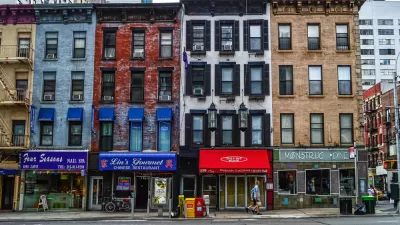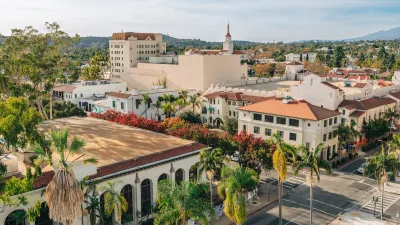Non-profit developers are joining forces to increase their buying power in the pricey New York housing market.

Affordable housing groups in New York are pooling properties under the control of a new member organization, JOE NYC, to help them "get an edge" in the real estate market, Oscar Perry Abello reports for Next City.
Community-based non-profit developers have had a heavy hand in creating and preserving affordable housing in New York since the 1970s, the article notes: Over the past 25 years, they've helped procure 120,000 affordable units in the city.
Today, these developers are faced with an increasingly expensive real estate market and the potential for currently affordable properties to "fall out" of the Low-income Housing Tax Credit incentive program. Joining forces under the JOE NYC umbrella could help them preserve and add to their existing portfolios as well as undertake new construction.
By pooling properties in JOE NYC, the nonprofits can start to combine their buildings in that way to get the bigger loan together, instead of trying for a bunch of smaller loans they might not be able to afford.
On the new construction front, JOE members hope they can partner with community-based nonprofit developers in going after requests for proposals from city agencies for new affordable housing developments — and beat out for-profit developers.
JOE currently has ten member organizations, and expects to build a portfolio of at least 3,000 affordable units over the next year.
FULL STORY: Nonprofits Join Up to Increase Affordable Housing Heft

Alabama: Trump Terminates Settlements for Black Communities Harmed By Raw Sewage
Trump deemed the landmark civil rights agreement “illegal DEI and environmental justice policy.”

Planetizen Federal Action Tracker
A weekly monitor of how Trump’s orders and actions are impacting planners and planning in America.

The 120 Year Old Tiny Home Villages That Sheltered San Francisco’s Earthquake Refugees
More than a century ago, San Francisco mobilized to house thousands of residents displaced by the 1906 earthquake. Could their strategy offer a model for the present?

In Both Crashes and Crime, Public Transportation is Far Safer than Driving
Contrary to popular assumptions, public transportation has far lower crash and crime rates than automobile travel. For safer communities, improve and encourage transit travel.

Report: Zoning Reforms Should Complement Nashville’s Ambitious Transit Plan
Without reform, restrictive zoning codes will limit the impact of the city’s planned transit expansion and could exclude some of the residents who depend on transit the most.

Judge Orders Release of Frozen IRA, IIJA Funding
The decision is a victory for environmental groups who charged that freezing funds for critical infrastructure and disaster response programs caused “real and irreparable harm” to communities.
Urban Design for Planners 1: Software Tools
This six-course series explores essential urban design concepts using open source software and equips planners with the tools they need to participate fully in the urban design process.
Planning for Universal Design
Learn the tools for implementing Universal Design in planning regulations.
Clanton & Associates, Inc.
Jessamine County Fiscal Court
Institute for Housing and Urban Development Studies (IHS)
City of Grandview
Harvard GSD Executive Education
Toledo-Lucas County Plan Commissions
Salt Lake City
NYU Wagner Graduate School of Public Service





























